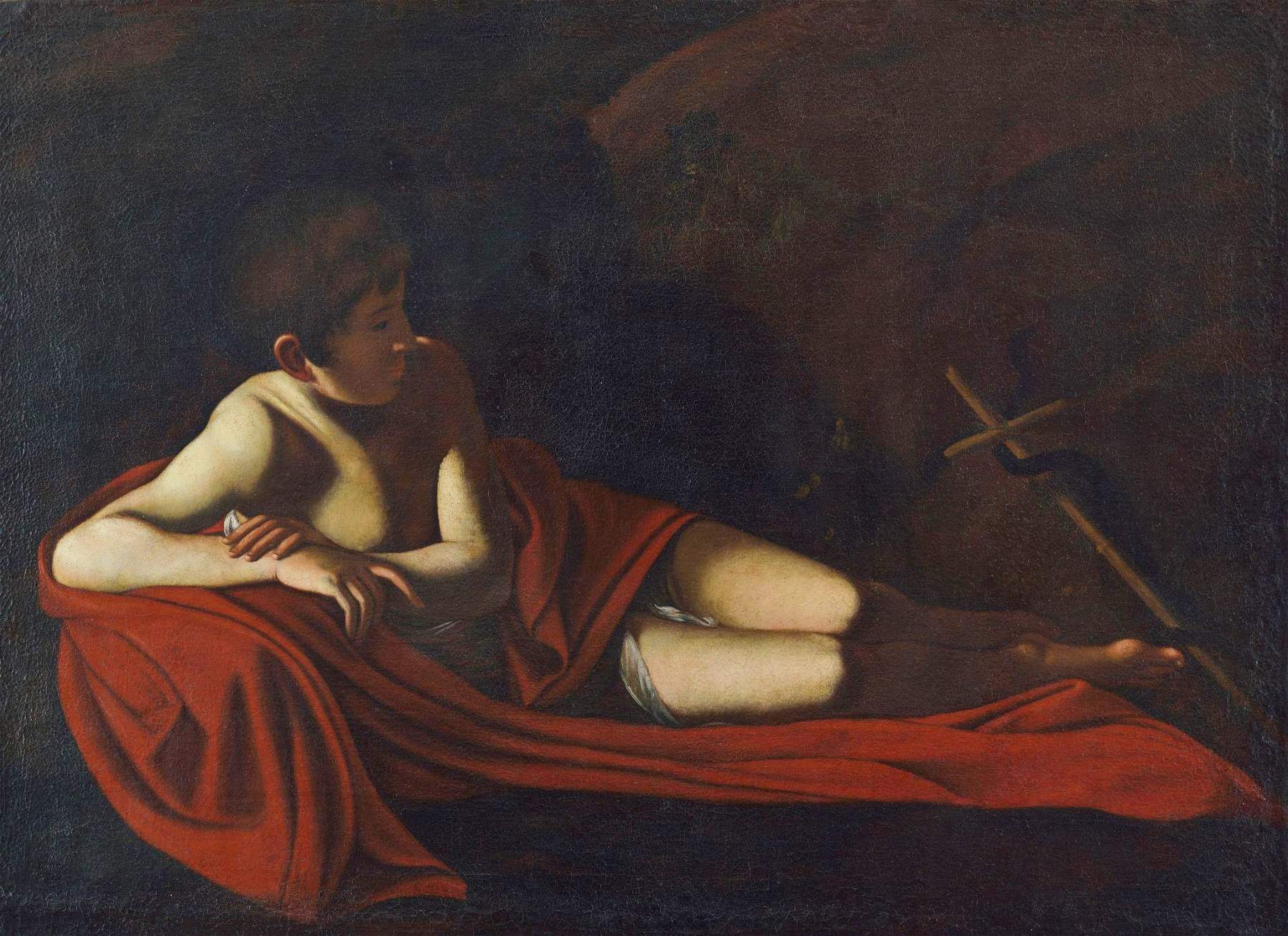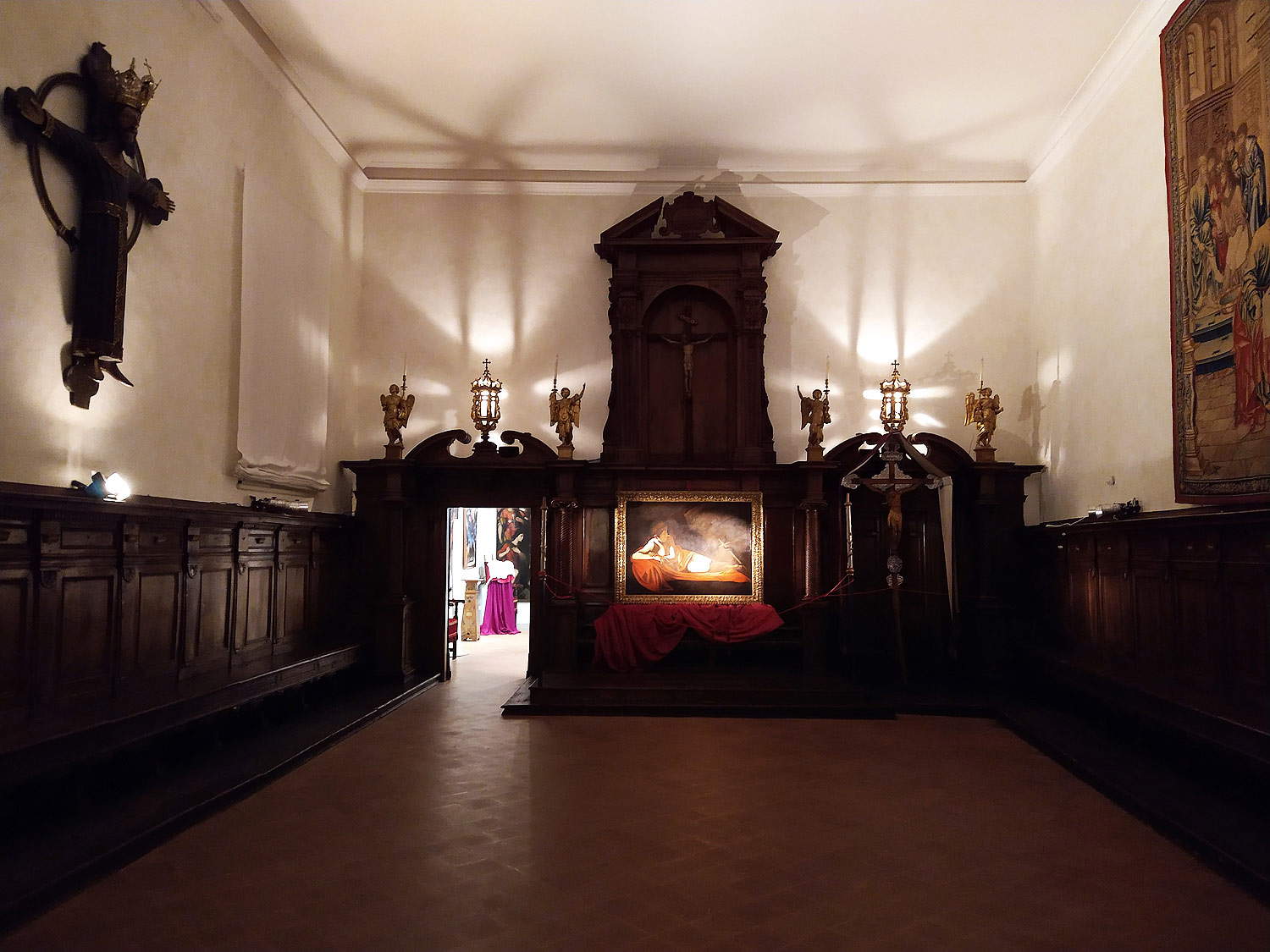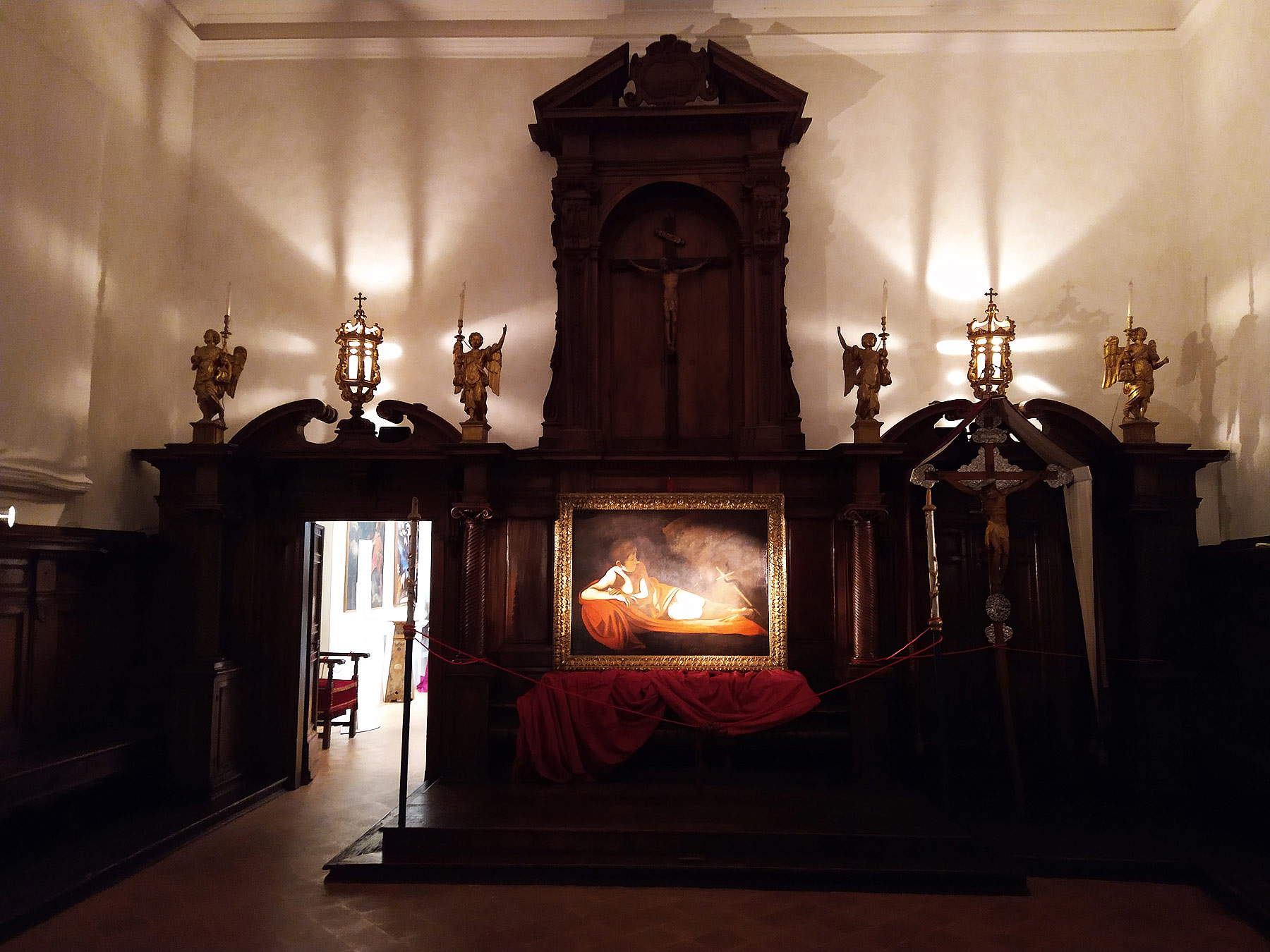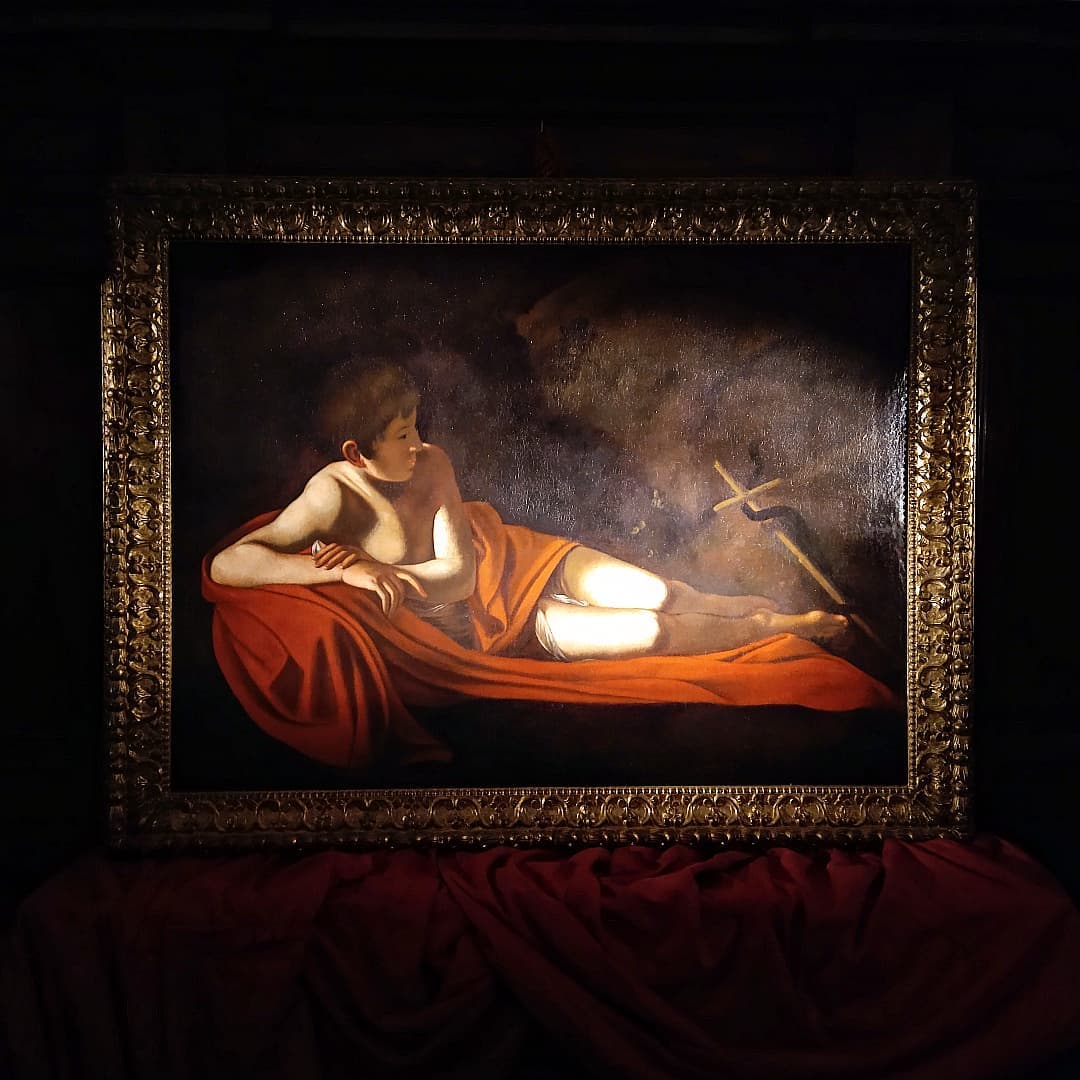Naples, July 29, 1610. Deodato Gentile, bishop of Caserta, writes a letter to Cardinal Scipione Borghese informing him that Michelangelo Merisi, the Caravaggio, has died at Porto Ercole, “where he fell ill and left his life.” The “felluca” that had brought him to the Tuscan beach, Gentile reports, left for Naples with “the robbe” the artist had with him, and which were delivered to the marquise Costanza Colonna, a resident of Chiaia: among the painter’s possessions were three paintings, “li doi S. Giovanni, e la Madalena.” Gentile sends to beg the lady marquise “that she wants to keep them well guarded, that they do not spoil, without letting them be seen, or go into the hands of anyone.” July 31: Gentile writes again to Scipione Borghese, informing him that the prior of Capua has seized the works. Caravaggio had been a knight of Malta, and the prior, the Order’s highest representative in the Kingdom of Naples, claims the paintings as an inheritance. The affair is resolved with the intervention of the viceroy, Pedro Fernández de Castro y Andrade, Count of Lemos, who also has a copy of one of the “doi S. Giovanni” executed. Eventually one of the two actually reaches Scipione Borghese. It is the St. John the Baptist today among the most admired pieces in the Borghese Gallery in Rome. Of the other we do not know the fate.
This could be how the story of the St. John the Baptist Lying Down, a painting that until December 31, 2021, Caravaggio specialists and lovers of painting and art history can observe up close at the Museum of Sacred Art in Camaiore, the beautiful village in Versilia that has the honor of being the first Italian location in history to show the public this painting, now owned by a Maltese collector. It could start like this, because around this work there are no certainties. There are, of course, the opinions of some experts, there are documents that could be referred to the painting, there are some recently performed diagnostic investigations. However, there is a lack of decisive elements. Above all, there is a very difficult picture to judge. The invention could easily belong to Caravaggio, and in particular to the last Caravaggio. That of St. John the Baptist in the Borghese Gallery and the Martyrdom of St. Ursula, or even the Magdalene in Ecstasy, to be precise. The figure of St. John is stretched out on the red cloth, ubiquitous in the later Merisi, illuminated by glow that lingers on his thighs and right arm, and immersed in a gloomy, barely distinguishable rocky landscape, another recurring presence in paintings of the last phase of Caravaggio’s career. At St. John’s feet is the cross, his iconographic attribute, around which a snake clings.
It is the execution, however, that is perplexing, although the reading of the work is undermined by the condition in which it has come down to us after having passed through four centuries of history. The pictorial surface is very battered: restorations that the canvas has undergone over the years, damage due to water percolation, some parts where the drafting is very ragged have made this St. John the Baptist lying down little more than a shadow of what it was originally meant to be. The face is now almost completely unrecognizable. Better instead is the lower part of the body. However, this is an extremely interesting painting, of which there is another example, preserved in Munich: the two variants have been the subject of debate since 2009, when Maurizio Marini first published the Maltese version (but the painting itself has been talked about since before, since the Munich example has been known since the 1970s). The work had resurfaced in 2009, when the current owner bought it in an auction by the U.S. house Thomaston. Several scholars have since commented on the painting.




Marini leaned toward the Munich exemplar, and like him others. In favor of the Malta version, however, Roberta Lapucci and Mina Gregori argued. Lapucci makes the case for technical elements: the presence of incisions on the right arm, on the inner thighs and on the cloths at the height of the groin (it has been said of how the lower part of Giovannino’s body is the most interesting portion of the painting), some overlapping of the pictorial drafts, a hint of zigzag brushstrokes on the left forearm. That is, all features compatible with Caravaggio’s modus operandi. Mina Gregori, on the other hand, is responsible for a 2019 appraisal, drafted before the Maltese painting was taken to Japan, during a tour that took a number of Michelangelo Merisi’s masterpieces from Italian museums and private collections to three museums in Sapporo, Nagoya and Osaka. On that occasion, the St. John the Baptist lying down was presented as attributed to Caravaggio, next to whose name appeared an unmistakable question mark. Gregori, in her paper, cited some inventory research carried out a few months earlier by Nadia Bastogi, who matched the Maltese painting with the “painting in canvas within a St. John the Baptist in the desert lying on a naked red cloth by the hand of Caravaggio with an all-gilt adornment with carved arabesques” which is recorded in the 1641 inventory of the Medici collections kept in the Villa del Poggio Imperiale. We do not know how it got there: perhaps through a knight of Malta of Florentine origin, perhaps Antonio Martelli or Filippo dell’Antella, both close to the Medici. In the later inventories, also from the seventeenth century, there is mention of a “St. John the Baptist lying down with a reed cross at his feet”: according to Bastogi and according to Gregori, the mention of the “reed cross” would be decisive in that, in the German painting, it is on the floor, and not near the feet of the St. John as in the painting exhibited in Camaiore. Another point in favor would be the inventory measurements, more similar to those of the Maltese painting than to the Munich version. The work mentioned in the Medici collections then underwent several transfers: from the Medici Palazzetto in Livorno, and later back to Florence between 1716 and 1723 (but to Palazzo Pitti). Then nothing: the work left the Medici collections at an unspecified time. And the St. John the Baptist lying down today in Malta would later reappear in 1860 in Boston. However, no strong evidence has emerged at present to link the painting on display in Camaiore, which was therefore present in America since the 19th century, with the painting mentioned in the Medici collections.
Those who immediately came out against the Maltese painting is Pietro Di Loreto, the only one, along with Vittorio Sgarbi, who has at the moment spoken out publicly after visiting the Camaiore exhibition. “The idea that we are in front of a masterpiece has completely evaporated, shrinking in favor of a copy, probably coeval, made by a close follower of the Lombard genius,” Di Loreto wrote on About Art online. “It must certainly be acknowledged that the painting has suffered from various unhealthy restorations and previous retouches that have compromised its drafting, depriving it in good part of the original material to the point that today an even cursory analysis, even if only visual, is hindered, and yet what can be understood in terms of ductus and executional technique leads to exclude-at least in the opinion of the writer-that the hand of the Master is involved.” And finally he cuts to the chase: "the one sub judice exhibited in Camaiore, coming from Malta, could be nothing but a copy of the one in Munich (assuming that this is the original, which some of Caravaggio’s exegetes do not contemplate), and if we consider how much Merisi was against granting anyone the possibility of copying his masterpieces, we must assume that the painting in Camaiore could be - although coeval - a few years after the artist’s death in 1610.) Sgarbi suspended judgment, stating in an article published in il Giornale that the painting’s condition “suggests that he does not take a position.”
It is also not certain that the painting on display in Versilia is one of “doi S. Giovanni.” There are at least three other paintings competing for second place: the St. John at the Spring with Lamb in a private London collection, the St. John at the Spring formerly in a collection in Rome, and the St. John at the Spring with Landscape, another work in a private Maltese collection on deposit at the Museum of Fine Arts, Valletta.
The story of the St. John the Baptist lying down is therefore far from clear and easy to solve. And the problem of Caravaggio’s copies is very intricate: of most of the Lombard painter’s paintings, multiple examples are known. The list is long: the Saint Francis in Ecstasy, for example. Prato’sCoronation of Thorns, a splendid example of which is known to be preserved in Genoa, in the church of San Bartolomeo della Certosa. Or the Magdalene in Ecstasy, replicated several times, and despite this abundance we have not yet come to understand which is the prototype, assuming it is one of the known versions. And then theEcce Homo that recently emerged on the market, the one that was about to go to auction in Madrid, at the Ansorena house, before it was withdrawn due to the great uproar it caused, as a candidate for being an autograph. Just to mention the most famous ones. And the Giovannino exhibited in Camaiore is only the latest in the series.
However, it is not with a reductionist slant that we speak of “copies”: some are of sublime quality. And Caravaggio himself is also known to have executed variants of his paintings. Now, the painting exhibited in Camaiore is in too bad of a state to be able to tip one’s hand in favor just by looking at the work, not least because the lighting does not help, since it was designed for an exclusive frontal view: in fact, a certainly scenographic and evocative set-up has been created, with the painting revealing itself to visitors alone in the assembly hall of the Confraternity of the Blessed Sacrament, whose volunteers guarantee the opening of the museum. An arrangement aimed at recreating the atmosphere of recollection that the painting must have inspired in its former owners, but not very suitable to get an overall idea of the work. However, the Camaiore exhibition is worth a visit (which for specialists would be called obligatory): first, because we are not dealing with a risky work. St. John the Baptist Lying Down is a painting on which authoritative critics have expressed their opinion, although it is a work that has so far received little favor. It is therefore a painting to be viewed with the greatest interest. Secondly, because the exhibition offers an important opportunity to advance our knowledge of the last Caravaggio: even if we admit that it is not an autograph, the importance of this painting, even if only as a document, is indisputable. And then, especially thinking of a public that in recent years has often heard Caravaggio mentioned by virtue of the many paintings that have emerged to compete for a place in his catalog, sometimes proposing themselves as authoritative candidates and sometimes as arrembant boos, the exhibition is worth a visit to realize how complex the subject of attributions is. Of works of art in general, and of Caravaggio in particular.
Warning: the translation into English of the original Italian article was created using automatic tools. We undertake to review all articles, but we do not guarantee the total absence of inaccuracies in the translation due to the program. You can find the original by clicking on the ITA button. If you find any mistake,please contact us.